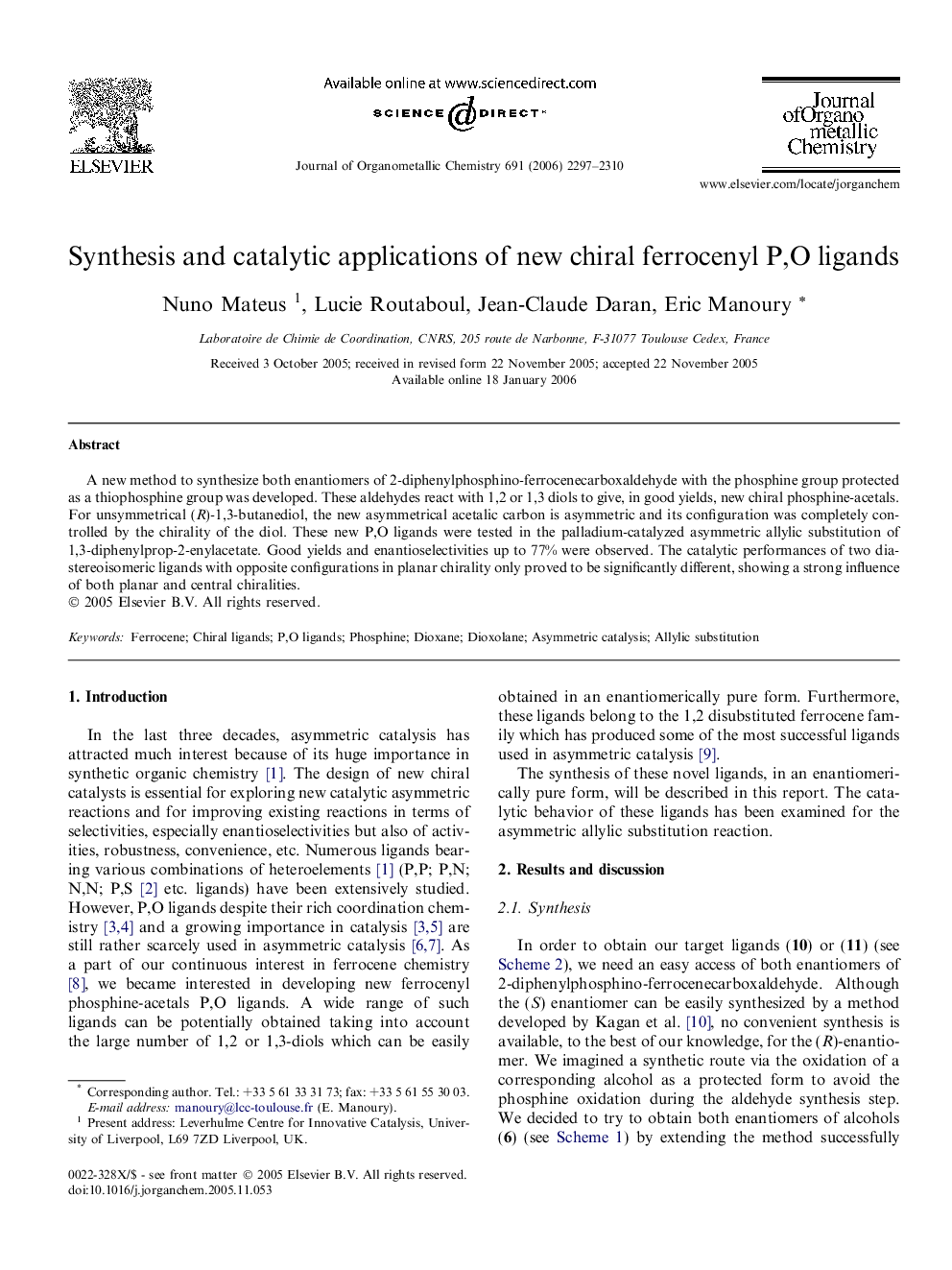| Article ID | Journal | Published Year | Pages | File Type |
|---|---|---|---|---|
| 1323934 | Journal of Organometallic Chemistry | 2006 | 14 Pages |
A new method to synthesize both enantiomers of 2-diphenylphosphino-ferrocenecarboxaldehyde with the phosphine group protected as a thiophosphine group was developed. These aldehydes react with 1,2 or 1,3 diols to give, in good yields, new chiral phosphine-acetals. For unsymmetrical (R)-1,3-butanediol, the new asymmetrical acetalic carbon is asymmetric and its configuration was completely controlled by the chirality of the diol. These new P,O ligands were tested in the palladium-catalyzed asymmetric allylic substitution of 1,3-diphenylprop-2-enylacetate. Good yields and enantioselectivities up to 77% were observed. The catalytic performances of two diastereoisomeric ligands with opposite configurations in planar chirality only proved to be significantly different, showing a strong influence of both planar and central chiralities.
Graphical abstractNew chiral ferrocenyl phosphine-acetals ligands have been synthesized in an enantiomerically pure form from chiral 1,2 or 1,3-diols and the two isomers of 2-diphenylphosphino-ferrocenecarboxaldehyde. These new P,O ligands were successfully used in the palladium-catalyzed asymmetric allylic substitution of 1,3-diphenylprop-2-enylacetate with good enantioselectivities (up to 77%).Figure optionsDownload full-size imageDownload as PowerPoint slide
